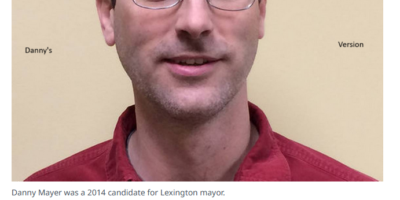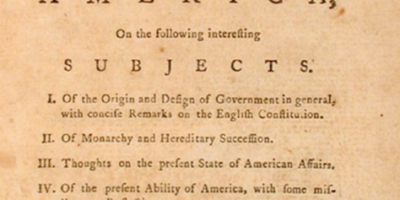An NoC equine-sporting report
“I was writing this commentary about the World Equestrian Games, and after several false starts, I realized why it was difficult to put into words the single most important benefit of the event. It’s because we gained something that you can’t quantify in an economic impact study: confidence.”
—Business Lexington
Since landing the World Equestrian Games earlier in the decade, our city leaders have taken part in a pretty creative feedback loop. They have spent considerable amounts of their time, money and media space convincing the Lexington population that the far greater amounts they would spend of their time, money and media space on WEG would yield great returns for the city.
The loop has had at least two defining themes. First has been an early emphasis on the sound (theoretical) business sense for holding the Games in Lexington. City leaders took pains to remind city residents that WEG was a huge international event (though, curiously, one that nobody had ever heard of before). It would be, nearly all large media outlets and talking heads proclaimed, the biggest sporting event in Kentucky history. Lexington was smart to “leverage” its horse industry to land the event, they told us.
The proliferating use of “leverage” and other business-seeming words gave this claim an air of validity. So, too, did Louisville economist Paul Coomes’ impact study (financed by the WEG foundation), which claimed a positive $167 million boost from holding the Games.
The second looped theme was the idea that WEG signaled Lexington’s entrance onto the world stage, and that this new global stage signaled great things on the horizon for the hometown folks. Writing in January of this year, for example, Tom Eblen proclaimed that “[t]his year could be a turning point [for Lexington]…That’s mainly because of the Alltech FEI World Equestrian Games, which will focus international attention on Lexington from Sept. 25-Oct. 10.”
Eblen’s turning point resonated both culturally and economically. WEG promised to showcase to the word a new progressive Lexington: urbane, sophisticated, multicultural, unafraid of the big time. It also promised to be a catalyst for the city’s economic emergence into the global marketplace (of horse sporting activities). Economically, it would provide a vital and timely tourism boost to city businesses, who had been sharpening their gouging knives since before the 2008 crash. Pulling off such a huge international event would give the city a “civic confidence” that could not be priced in dollars, proclaimed Eblen.
The way for Lexingtonians to express their civic confidence, Eblen and others suggested, was to not be negative, to deal with the construction hassles of preparing for the Games, to blow their hard-earned dough on attending the Games, and to sell the city as good little tour-guide residents should. Lexington Mayor Jim Newberry summed up best citizens’ role in all this: sweep off your front porches, especially if you might come in contact with a WEGer. And don’t be a fucking pessimist and ruin our city’s chances for success.
This was the compact that the feedback loop sought to enforce: city officials and private business leaders would put on one king-hell of an international spectacle, and in return we Lexingtonians would be expected to shut up, drink ourselves silly for two weeks and otherwise participate in the festivities, based on the assumption that we all want to be part of a new, better Lexington…sponsored by Alltech and Fifth Third Bank. Think of it as the 2008 message of hope and change, rung through many piles of steaming competition-grade horse shit and sold back to us at inflated organic prices.
WEG context: horse racing is tanking
Though less discussed, WEG support by city business leaders should be looked at primarily in the context of the one horse industry not a party to the Equestrian Games: thoroughbred horse racing.
It is the thoroughbred horse industry that has ruled the inner bluegrass region over the past century. In the early 1900s, Lexington branded itself as the racist southern alternative to the then popular thoroughbred centers in New Jersey and Pennsylvania. In the 50 years since the ending of Jim Crow, Lexington has managed to maintain its privileged position at the tracks, but the racing industry ain’t what it used to be.
Zenyatta bumps aside, thoroughbred racing, a niche sport run by wealthy folks who really dig breeding lines and/or money, is becoming less popular. Kids don’t play it, and it requires vast amounts of capital to get involved. WEGers have bandied about the need to leverage the Games for Lexington’s benefit, but what they hope to leverage is the region’s thoroughbred horse infrastructure: its vets and farms and stables, its workforce and restaurants and government buy-in to its continued existence as a regional economic goliath.
Unfortunately, it’s the thoroughbred industry that’s all leveraged out. Since 2008, thoroughbred farms have been going bankrupt at a noticeable clip, as the economic bubble in horse futures—lineage, bloodlines, purchases at the annual horse sales—crapped out about the same time other leveraged, which is to say debt-funded, assets traded around the world began to fall as well. In Lexington, Stonewall Farm has gotten the most press. “Stonewall attorney John Hamilton said the bankruptcy is setting up as ‘a battle of the banks’,” Herald-Leader writer Janet Patton reported on August 12, “between Fifth Third, which lent money on the broodmares, and JPMorgan Chase, which lent money on the stallions.”
More recently, November 8, Patton reported on what she described as “the complex ClassicStar mare-lease litigation,” essentially a $500 million fraud case involving the swapping of mare leases for oil investments with the publicly traded energy company Gastar Exploration. Part of the fraud by Gastar employees seems to involve the fact that some of the mares attached to the traded mare leases didn’t even exist.
A couple of days ago, Alicia Wincze Hughes continued with the down news. “For a third consecutive year,” she reported, “the Keeneland November sale suffered downturns.” Overall gross during the fall sales was down 7.7 percent from 2009. Nationally, betting at horse tracks is down 7.2 percent for the year. Globally, the rich have recovered and are going gangbusters. They’re just not buying thoroughbreds like they used to.
But hey, this is capitalism. Things always work out. Creative destruction works.
With the city’s signature sports racing industry on hard times, city leaders seem to have decided that broadening the region’s equine base is key to the city’s continued economic development. It’s Lexington’s unique embrace of progressive multiculturalism: in addition to thoroughbreds, we can now celebrate and accept as economically exploitable all kinds of equine types and bloodlines. Fuck horse racing; our new brand’s simply horse.
The thinking is so old school that it might almost be considered forward thinking: the term horse and buggy used to signify outdated business models and a stubborn, head-in-the-sand mentality…back in the 1950s when capitalism was really swinging. But here in sophisticated Lexington in 2010, the horse and buggy is trumpeted—literally—as a key to our city’s economic future.
This would be fine were horse and buggy-riding presented, say, as an alternative to petroleum-addicted farming practices, but it’s not. WEG, after all, isn’t about making the horse and buggy industry useful. It’s about promoting a sport—a sport by its own accounting ruled by princes and sultans and other multiculturally pampered sons and daughters of fortune—out of horses, buggies and the aestheticized movements of agricultural labor. It’s slow, it’s boring, and it has no use value at all other than the fact that a few very rich people seem to like it. Unfortunately, this also describes Elephant polo.
Oh yeah, and the city and state and nation ponied up $40 million for an indoor arena for it, $25 million for an outdoor arena for it and $14 million for roads and sidewalks for the far away suburban grounds that house and promote it. Remember that the next time you look to the city for $69 million in development funds. You’ll find it instead in the growth industry known as eventing horses.
Misplaced priorities
The nearly $70 million in public funds directed to the Horse Park have been described by the press as tangible investments in the city’s equine future. That is, of course, one way to look at it. Another way would be to describe it as a massive state-funded subsidy—welfare—directed to a particular niche industry that’s filled with already well-off players. We prefer to call it an egregious example of misplaced priorities for a city dealing with the weight of a severe global economic contraction. It was either stupid to the bone, or obscenely obtuse.
The Horse Park upgrades are not the only physical reminder of Lexington’s misplaced priorities. An August 1 Herald-Leader article pointed out that the cost in public expenditures totaled $258 million. This number included close to $150 million in projects that were sped up to be finished in time for the games. Since several projects were “waiting” for several decades, one might reasonably conclude that these were not normal “speed up” projects, but more accurately described as new projects.
Comparatively, the private foundation tagged with organizing the Games, the paper reported then, would only need $70 million to operate. (It is unclear if Alltech’s $35 million contribution is part of the $70 million figure.) These figures don’t even take into account things like increased pay for security and police forces and other costs of hosting an 18 day event.
These WEG projects and money have a particular geography to them. They are all located in one of three places: (1) in the six block space between UK and Transylvania University (ie, the downtown Horse Mania zone that WEGers would party in); (2) at the Horse Park, located at the northwest outskirts of the county with few residents living nearby; (3) on the Newtown Pike corridor connecting the Horse Park to downtown. That very few Lexington residents live in any of these sectors—corridors, as the city’s business folks like to describe them—and that downtown and the horse industry are already heavily supported by the city and its citizens, seems to have escaped the notice of most Lexington commentators on WEG.
Of course, one can see misplaced priorities in more than brick and mortar projects. It’s also found in places that do not get funding. Walk on streets north of Third Street—Loudon’s a good example but not the only one—and infrastructure projects more dire than Main Street’s beautifying exist. The Legacy Trail, which connects the northern tip of downtown with—wait for it—the Kentucky Horse Park by way of a bike path, was built in the run-up to WEG. Isaac Murphy Memorial Park at the corner of Third and Winchester? Not finished. The Town-Branch bike trail, begun before the Legacy Trail, which sits next to downtown nearby both residential neighborhoods and the city’s hoped-for bourbon district? Not finished either.
The focus on WEG, it seems, provided a roadmap, a poorly drawn and inefficient roadmap, for city projects. Put more bluntly: WEG actually set the city back in terms of city projects and funds. Neighborhoods and projects, we’d guess many, were set back, put on hold, for WEG. (And we’re not just talking about a 3 week hold during the events.)
All we are saying, is give coverage a chance
On Tuesday, September 28, the California Cowgirls stormed onto the front page of the Lexington Herald-Leader. Amy Wilson relayed the heart-wrenching story of a group of California friends who fundraised their way to the Games to participate in a show for the General Admission guests. As all of Wilson’s stories, the writing was superb, the story an interesting page-turner.
At the same time, though, Wilson’s story highlighted a larger theme of the Leader‘s coverage during WEG (and, indeed, from about mid-August onwards), when the paper suddenly turned into a WEG booster after a couple semi-investigative stories. During the Games themselves, nearly all local coverage reflected a WEG intersection. Copley and Tunis on WEG Arts and music. Davis and Eblen and Wilson columns and stories. Even John Cheves wrote an excellent surreal piece on the Bahrain tent that had us in stitches. The Leader even sported a humorously small WEG “pull out section,” mostly consisting of a feel good story, big pictures, and medal and gate counts. Coverage was fantastic.
Except of course, WEG was a sporting event that had very little relevance as news, and it seemed designed—like the entire event itself—to market to outside tourists. It was an event because the Leader said it was an event, and because the city spent shitloads of money on it. But it held no real intrinsic longerm value to Lexington residents.
When the California Cowgirls were on the front page (of the entire paper, not just the 4-page WEG special pull-out), for example, on page A-3 the headline read “Kentuckians among 100 arrested in Washington protesting mountaintop mining.” It was about the Appalachia Rising gathering in D.C., a national gathering of activists calling for a halt to the practice of mountaintop removal mining.
The protest had been planned, announced, organized and advertised many months in advance. Several Lexingtonians and many Kentuckians living within the Leader‘s delivery area were arrested participating in the events. The protest itself was several thousands large. And yet not a single Herald-Leader writer covered the event. The write up was a Staff Wire report.
There may, of course, be no connection between the inordinate superficial attention to WEG coverage of out-of-town eventing celebrities and nobodies, and the diminished attention to Lexington residents engaged in the practice of civil democracy. Maybe the Leader would not have chosen to cover it even if they had not dispatched most of their writers to cover the Games.
But it sure seems emblematic of a city more interested in catering to the needs of a transient global elite sporting class than to the citizens living there on a day to day basis, or to the spectacle of litlle black haitian kids rolled out for the cameras and writers every third day at WEG than to the very real continuing disaster that is Haiti and our inadequate global response to it. Like funding, in choosing coverage, choices are made all the time.
It seems odd that, less than 2 years after a global financial collapse, the “new direction” Lexington leaders want to take us looks a lot like the old direction: chase the rich for fractional crumbs, hope they stop in Lexington every now and again to drive in from their horse farm compounds, maybe have dinner and drinks downtown, give a nice big tip.




1 Pingback